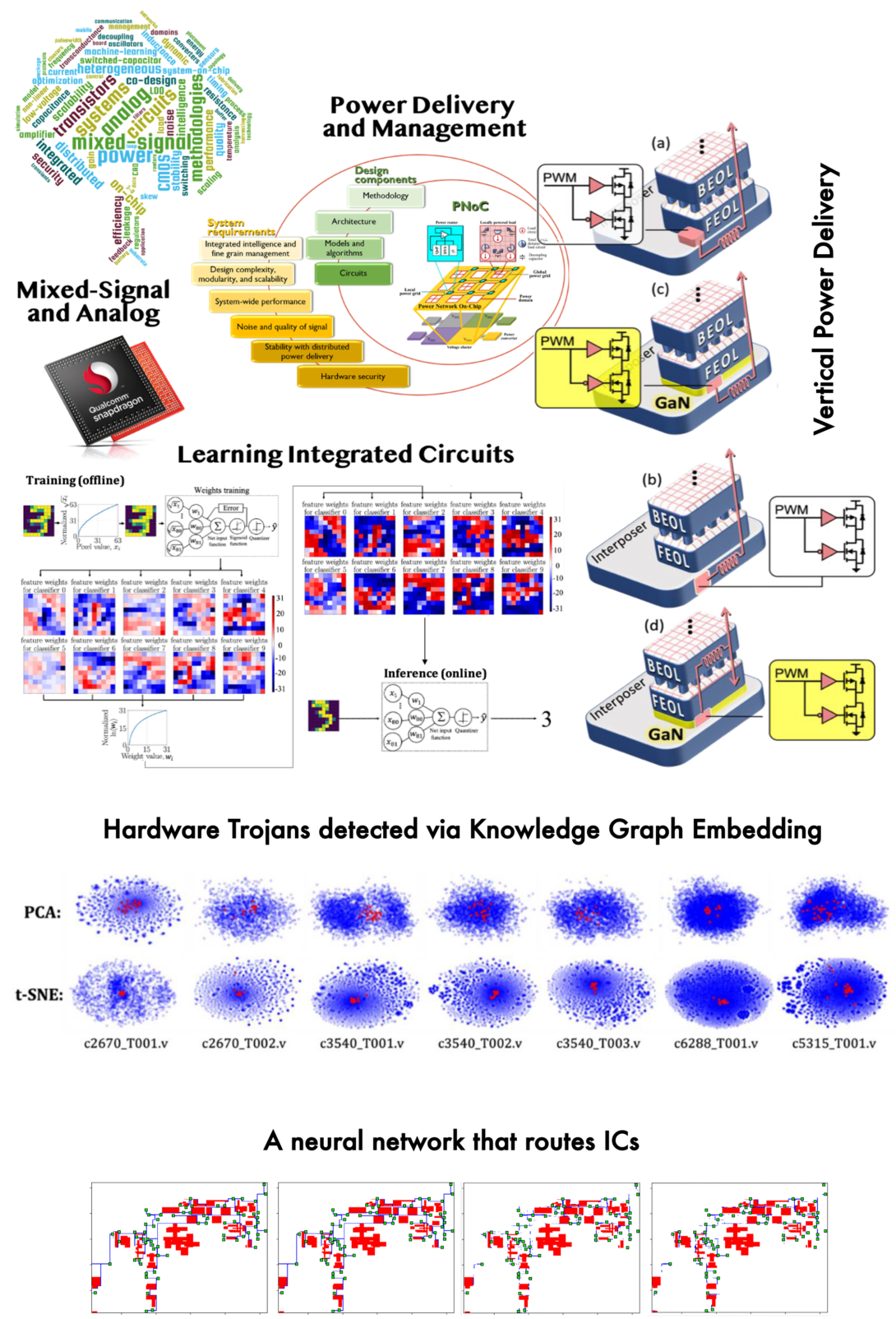Research

Learning enabled electronic design automation and mixed-signal circuit and system design for high performance applications are our primary research foci. Special emphasis is placed on power delivery, hardware security, and machine learning ICs. Optimization of the application-specific design process and system characteristics is addressed at multiple levels of IC design hierarchy. A primary objective is to develop a synergistic combination of carefully co-designed circuits, algorithms, architectures, and methodologies.
Intelligent Power Delivery and Management in High Performance Computing Systems
The future of heterogeneous, high performance systems is strongly dependent upon the power delivery system, and deeply affected by the quality and efficiency of delivered power, availability of fine grain dynamically controlled voltage levels, and the ability to manage power in real-time. The general approach is to prioritize vertical power delivery and apply localized intelligence as an integrated element of modern power delivery and managements systems, addressing the challenges of system-wide efficiency, quality of power, and stability of parallel connected power supplies.
Mixed-Signal and Analog Circuits
Two primary directions are (i) advancing the design of DC-DC high-voltage and point-of-load voltage regulators, and (ii) enabling power efficient learning and inference on-chip with analog ICs. To that end, we develop novel circuit architectures, and design and fabricate the proposed systems.
Hardware Security
Hardware attacks are widely used to reduce the performance and/or life-time of computing devices, and decode encrypted information based on the co-analysis of stored data and leaking information. Clock, power, and electromagnetic sensors have been exploited to obtain information within side channel attacks. Hardware Trojans have been planted in integrated circuits to modify the functionality, degrade performance, or leak information. We utilize machine learning to detect hardware security attacks with accuracy, robustness, and efficiency that otherwise wouldn’t be possible.
Electronic Design Automation
With exponentially increasing complexity of modern ICs, physical design has become impractically expensive — with traditional CAD tools no convergence bounds and/or guarantees on the output quality can be provided. Furthermore, these traditional tools are limited to sequential execution on CPU. Alternatively, machine learning approaches exhibit excellent prediction performance, enhancing the traditional CAD algorithms. We explore ML enabled EDA for orders of magnitude shorter turn-around time through parallelization of VLSI CAD on modern computing platforms.